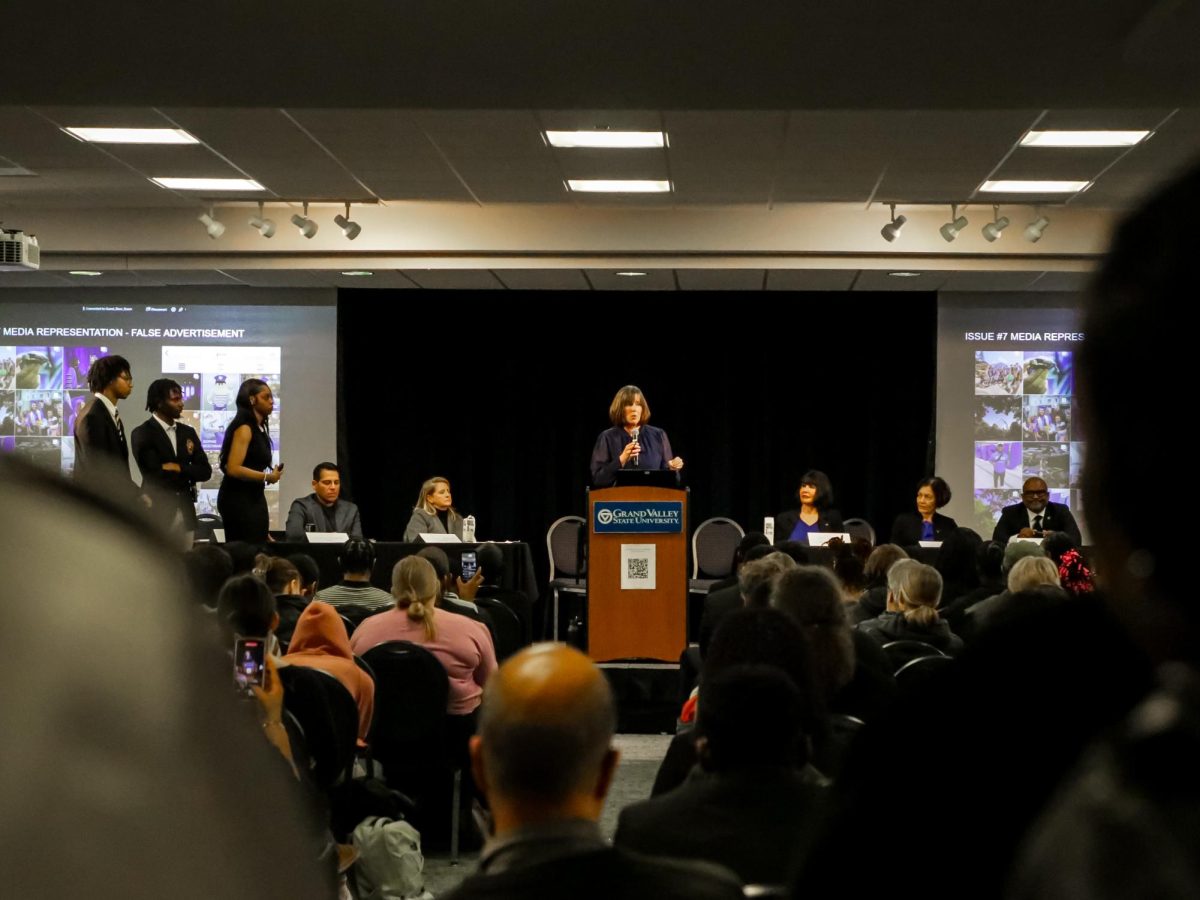The true cost of education
Nov 25, 2013
When choosing which college to attend, many students take the amount they have to pay for their education into account. For most, this means tuition, housing and textbook costs. For nursing students at Grand Valley State University, travel expenses also need to be considered.
Nursing students are required to have experience in a clinical setting during their five semesters in the program. These students are assigned to places where care is needed, including units in hospitals, long-term care facilities, schools and hospices to provide students with practice giving care.
“Students often spend up to eight hours a day two or three times a week at their clinical sites,” said Elaine Van Doren, associate dean for undergraduate programs in the Kirkhof College of Nursing.
When placing students at clinical sites, Van Doren said she tries to make sure students are kept within an hour of Grand Rapids. However, GVSU is competing with 16 other nursing programs in the West Michigan area to place students in the same positions, she said, and occasionally some are placed more than an hour away.
Van Doren said the next term will be the first time in her five years as associate dean that she has to place a student outside the hour radius of Grand Rapids.
“There are only so many places to place students,” she said. “We can’t place a lot of people in one area.”
With current gas prices at around $3 per gallon in the Grand Rapids area, traveling to assigned places several times a week can get expensive—and students are not reimbursed.
Molly Streeter, a fifth-year student on her third semester in KCON, said she participates in clinical placements two days a week. She currently travels about 20 minutes those days to get to Metro Health Hospital in Wyoming, Mich.
But she’s found a way to ease her expenses.
“I carpool with two other nursing students in my clinical, which is a very common practice in the nursing program and helps save a lot of money,” Streeter said.
In order to participate in their clinical training, nursing students also have to buy supplies commonly used by professional nurses.
Lauren Anderson, a sophomore who was recently accepted into the nursing program, just bought new scrubs, a stethoscope and a blood pressure kit.
“The two sets of scrubs I bought were $84 total,” Anderson said. “The stethoscope was $77.50 and the BP kit was $32. All are required by the university. At orientation, they had vendors who sell the items needed for the program.”
Nursing is not the only program that has extra fees. Many art students are required to continually refill their supplies throughout the semester, which can cost at least $150 depending on the class. Some professors also make technology upgrades—from purchasing a smart phone to an external hard drive—a class requirement.
Some students, including Streeter, feel that the outcome is worth the cost, though.
“I’ve had the opportunity to work at many different hospitals in and around the Grand Rapids area, and each has provided me with unique experiences,” she said. “The excess travel time during the semester can be draining, but I think the benefits we receive as students from these clinical experiences outweigh any of the negatives.”
For more information about the nursing program, visit www.gvsu.edu/kcon.






















